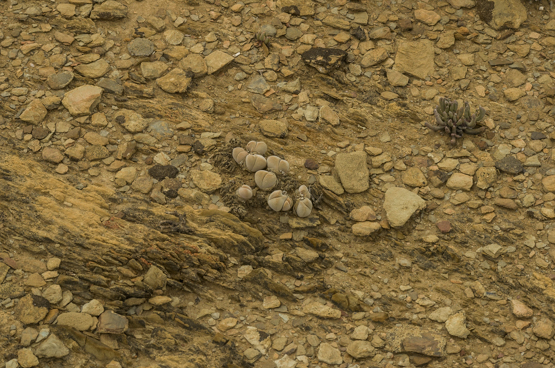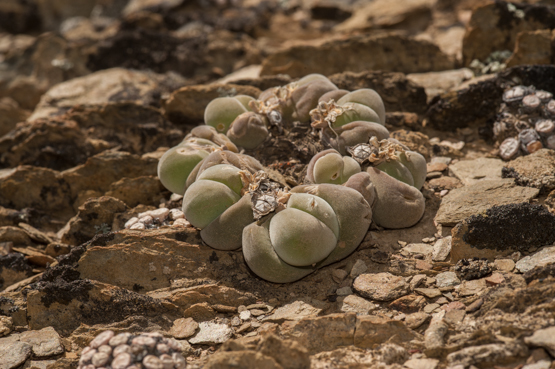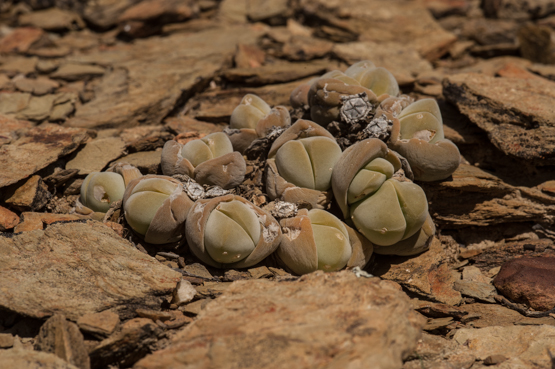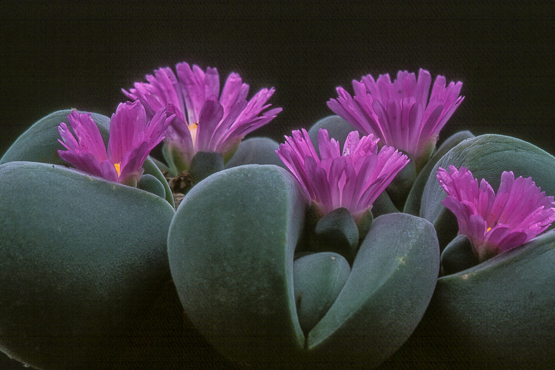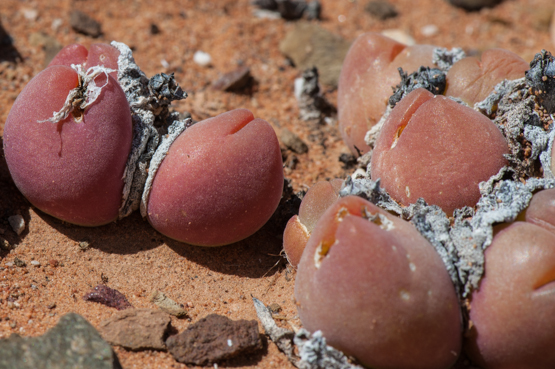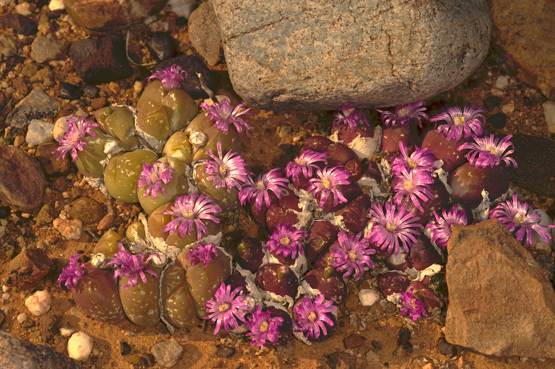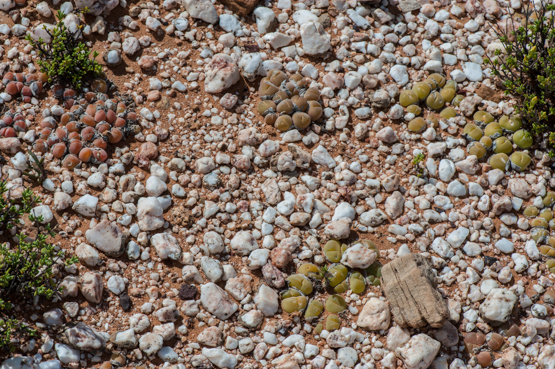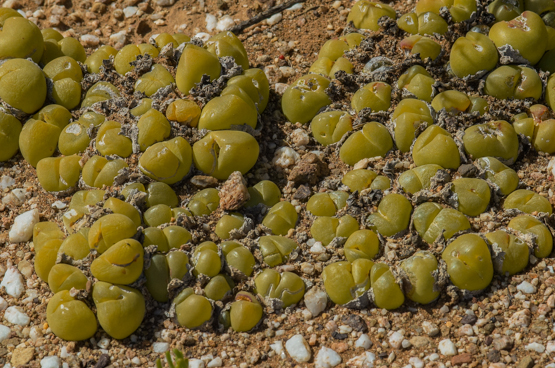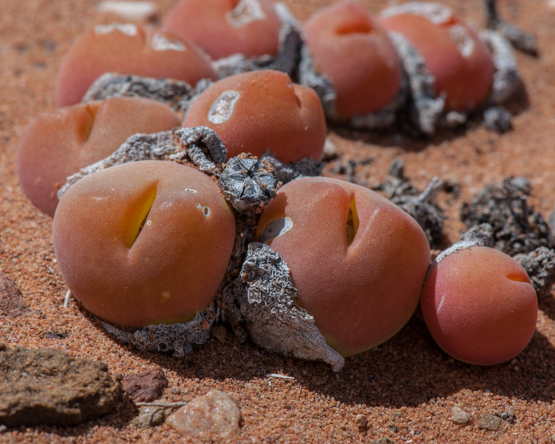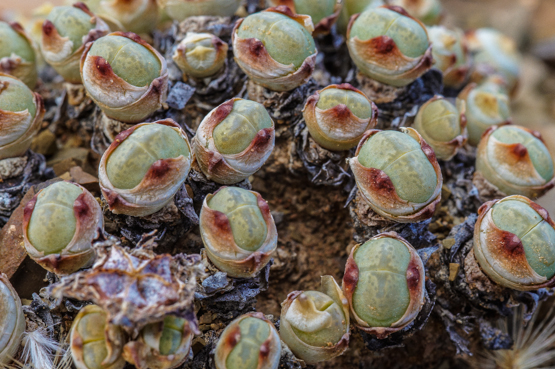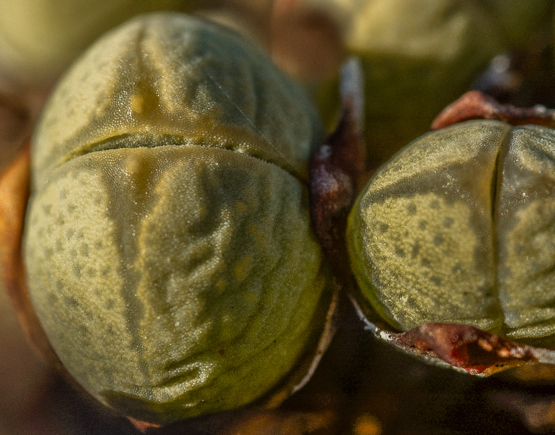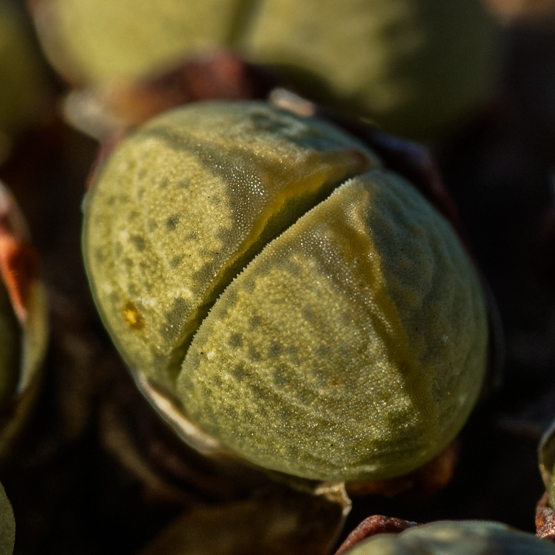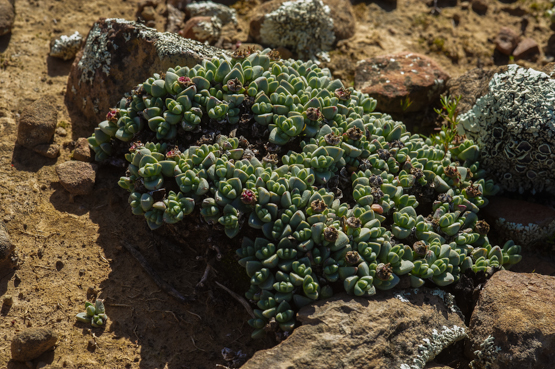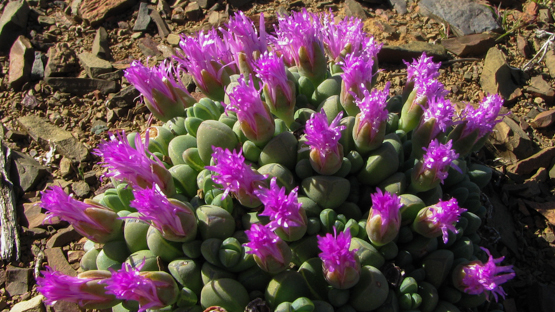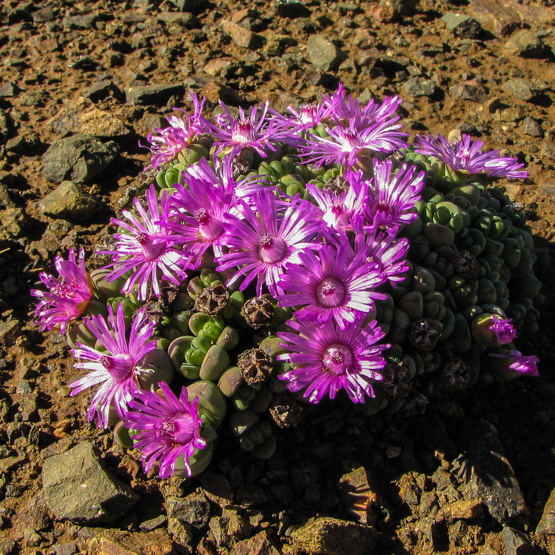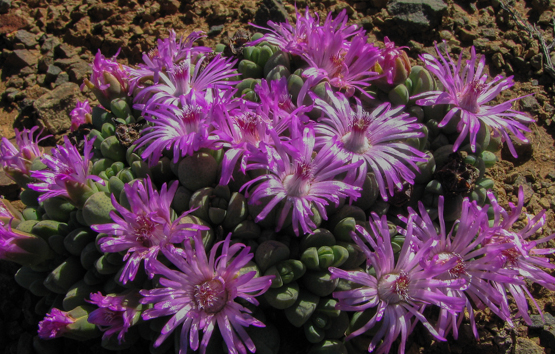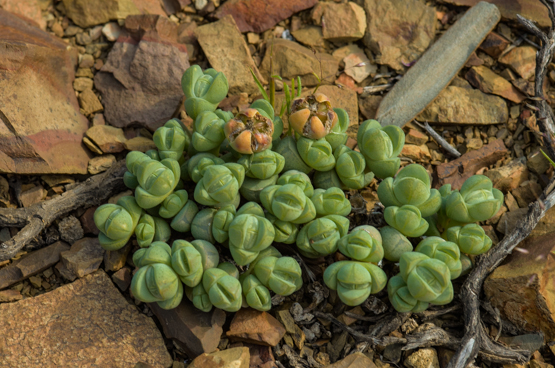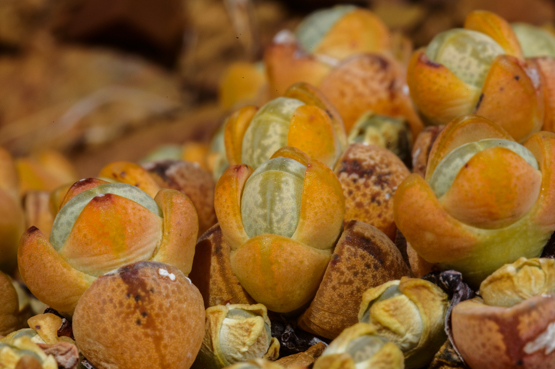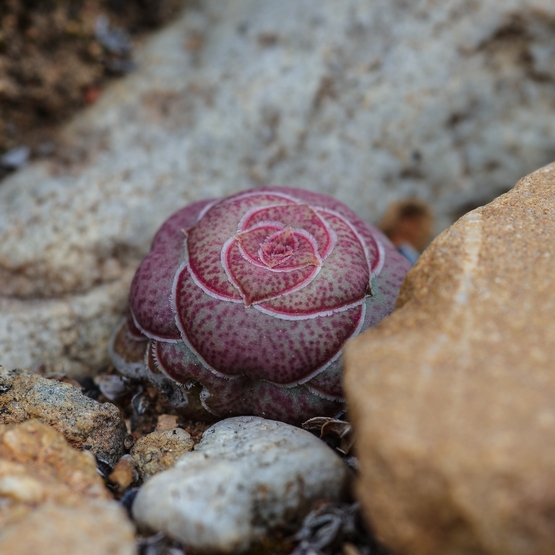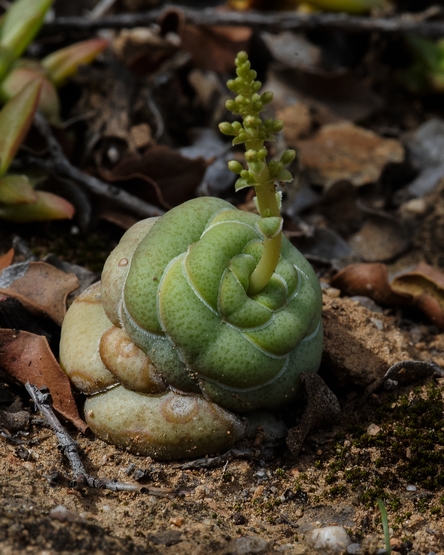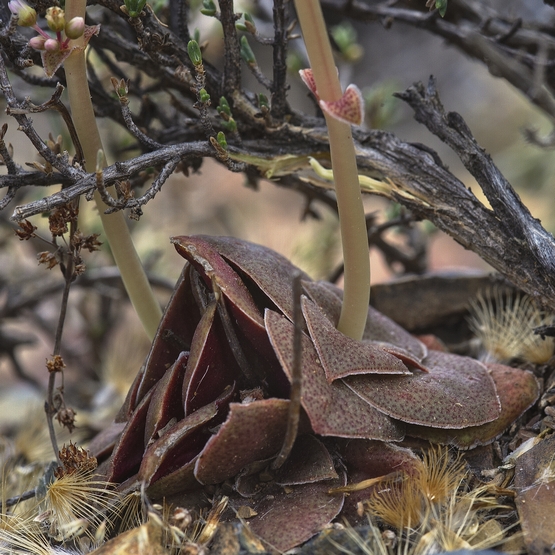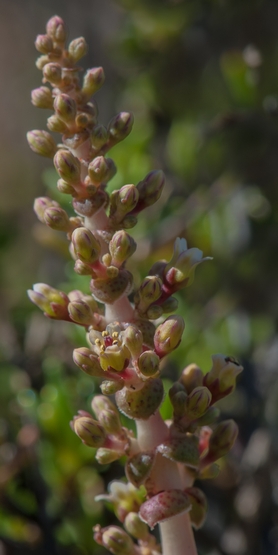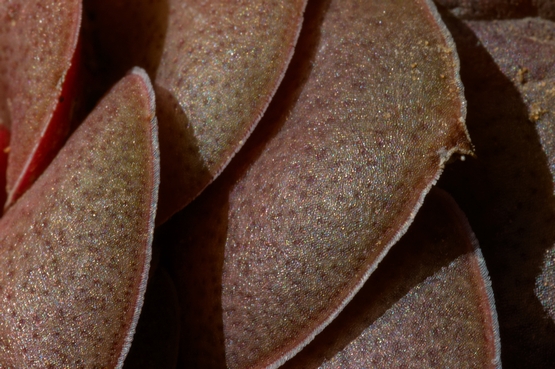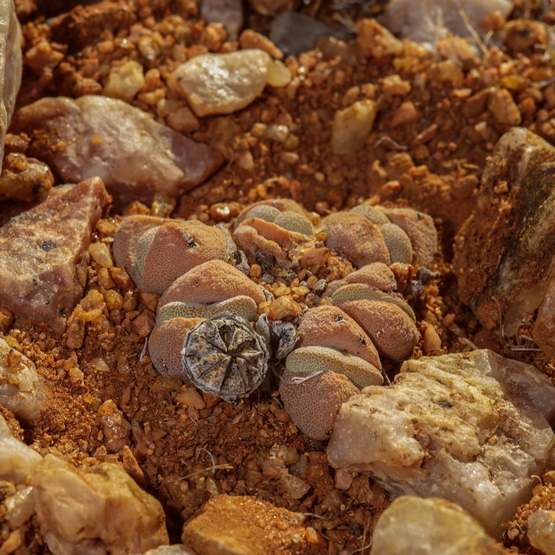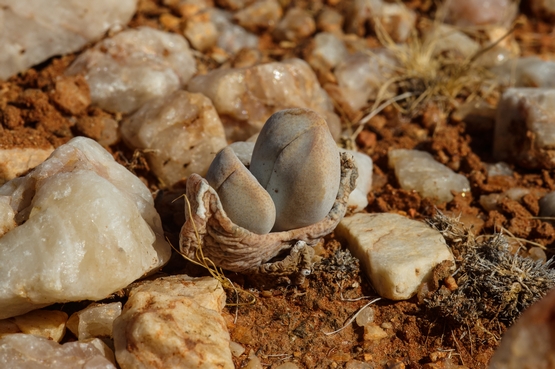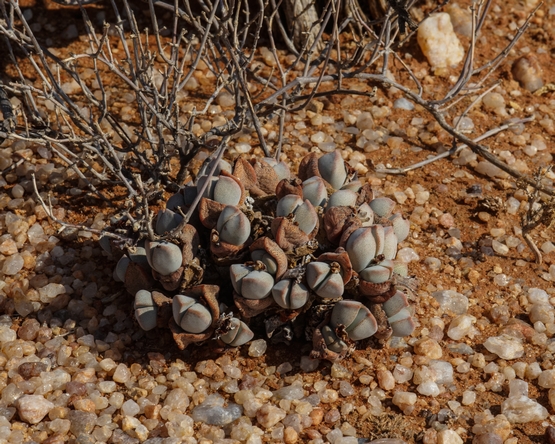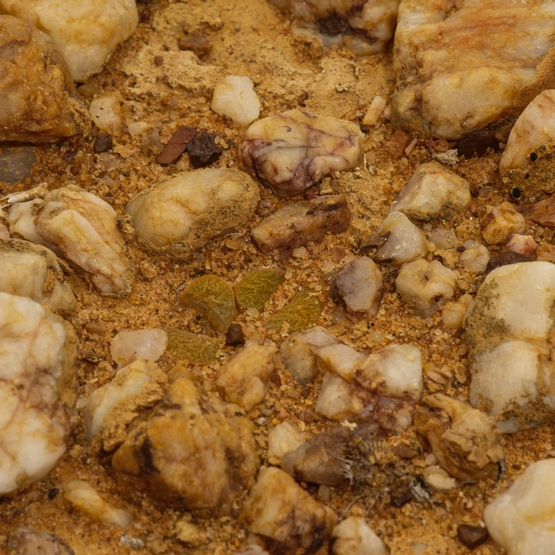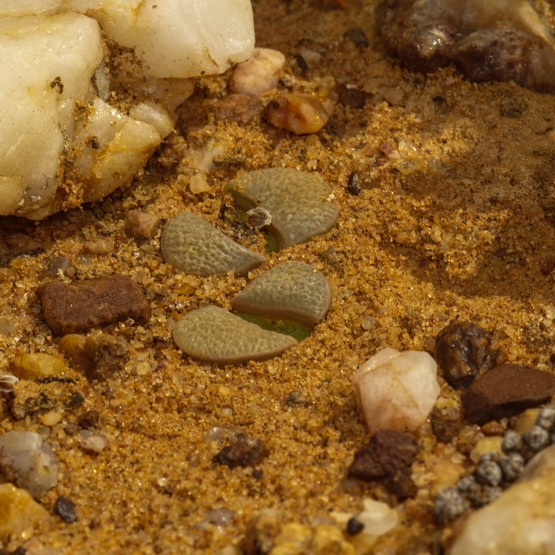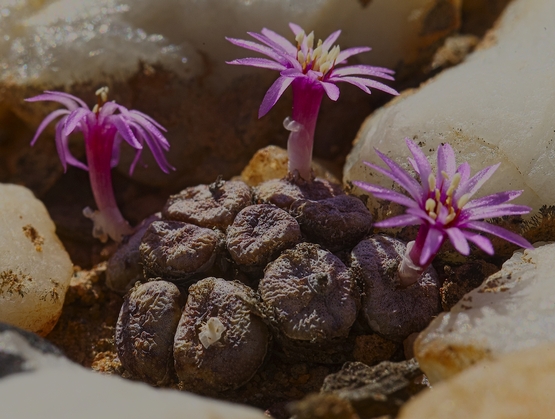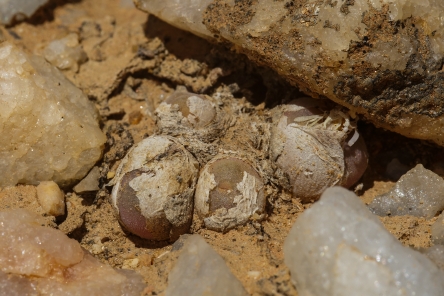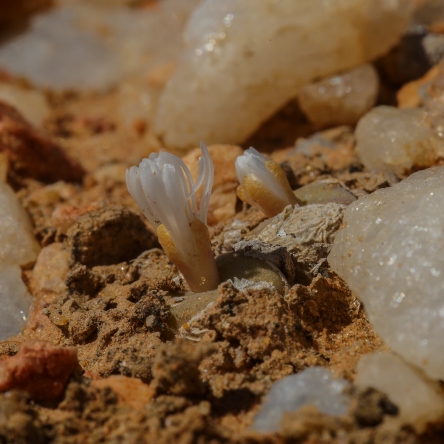In cultivation this species is rather common, as it is one of the easier Gibbaeums to grow and flower (see picture at bottom).
In the wild it is only found on a few very dry shaly ridges near Vanwyksdorp. According to Nel’s Gibbaeum Handbook, it is the only Gibbaeum which does not grow together with any other species of the genus.
The plants look a bit like G. album, but they are darker and softer. The flowers appear in April.
Tag: miniatures
Gibbaeum nuciforme 2
Gibbaeum nuciforme (G. cryptopodium) 1
A widely distributed species (from Zebra, between George and Oudtshoorn, to the Montagu area), often locally abundant on loamy soils with quartz pebbles.
The very soft, almost translucent bodies lie flat on the ground (cryptopodium literally means “with hidden foot”) and in dry periods often almost disappear from sight. In the rainy season they are yellowish green, often turning red in the dry period. They are more or less round or egg-shaped (nuciforme = shaped like a nut).
To be continued.
Antimima pumila
Although this species sometimes occurs in big colonies, it is nevertheless rather rare, as a result of the limited distribution area (along the border of the winter rainfall area, more or less in the Ceres-Sutherland-Laingsburg triangle). With leaves about a centimeter long, it really lives up to its name (pumila = dwarf).
The difference in appearance between plants in the resting and the growing period is so great that Louisa Bolus described the species twice within two years (as Ruschia pumila and R. levynsiae).
The pictures shown here will hopefully give you a good idea how much the plants change in a couple of months.
The first picture was made at the end of April (= Autumn) and the last one mid November (end of Spring). The flowering plants were photographed end of July-beginning of August.
